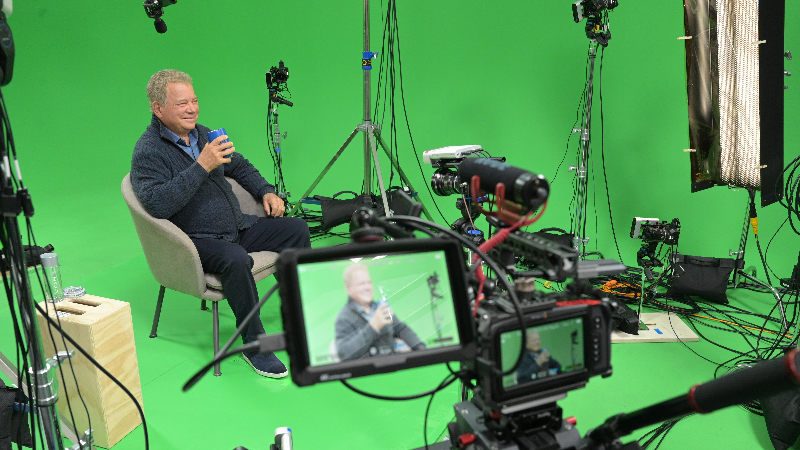William Shatner 'AI' will chat with you about the 'Star Trek' actor's life
You've got questions; Shatner's got answers.

Got a question for "Star Trek" actor William Shatner? You could see it answered in an interactive conversation powered by artificial intelligence (AI) and using video responses that Shatner prerecorded.
This two-way conversational video platform was developed by StoryFile, and the company recently introduced the "conversation" with Shatner on its website as a way to commemorate the actor's 90th birthday this past spring. In the video, a jovial-looking Shatner sits in a room awaiting users' questions about his life and career, which can be posed as audio or text. Once Shatner is asked a question, the system swiftly selects an appropriate answer from the prerecorded options, providing the response in real time.
The company recorded Shatner's answers in front of a greenscreen at StoryFile's studio in Los Angeles over four days; questions covered various topics, including details of his life story, according to a behind-the-scenes video that StoryFile shared March 22 on Vimeo.
Related: Can machines be creative? Meet 9 AI 'artists'
"Generations in the future will be able to have a conversation with him," StoryFile co-founder and CEO Heather Smith said in a statement. "Not an avatar, not a deep fake, but with the real William Shatner answering their questions about his life and work." Users can also use StoryFile to make their own interactive videos and document family stories, according to the website.
What keeps the StoryFile conversation flowing? Proprietary software called Conversa uses a type of AI known as natural language processing, which interprets text and spoken words in the same way people do. This enables a program to connect questions to answers and helps it "learn" from conversations to improve the accuracy of its responses.
Conversa then selects one response from hundreds of prerecorded options, making its choice by evaluating the question and linking it to words in a response, Smith told Live Science in an email. "Our software has been built with the express purpose of the experience being as similar to having an in-person conversation as possible," Smith said. Shatner answered nearly 600 questions for his StoryFile, according to Smith.
Sign up for the Live Science daily newsletter now
Get the world’s most fascinating discoveries delivered straight to your inbox.

Other programmers have trained AI to craft original paintings, deliver Jesus-like sermons and generate photorealistic portraits of Roman emperors, using databases of reference information for the AI to learn from. AI has also been trained to produce original animations and video clips — also known as "deepfakes" — using a technique called generative adversarial networks, or GANs. This method drives AI to improve its results by pairing a content-creating AI with another AI that evaluates the end result. This is how, over time, deepfakes can become hard to distinguish from actual filmed footage.
StoryFile doesn't create new responses by altering recorded videos; rather, it matches existing clips to certain words or phrases in a question. The results can be imperfect or oblique: For example, when asked: "What was your first acting job?" the Shatner StoryFile response describes his feelings as a 6-year-old, when he made an audience cry and applaud during a performance at summer camp.
But the AI can also learn from each conversation, allowing it to deliver better responses in the future.
"The different ways that people ask those questions help to train the AI so that it becomes more accurate the next time," Smith said. With practice, future conversations with Shatner may flow more naturally, providing the closest experience to a chat with the legendary "Star Trek" actor that most of us will ever get.
Originally published on Live Science.

Mindy Weisberger is an editor at Scholastic and a former Live Science channel editor and senior writer. She has reported on general science, covering climate change, paleontology, biology and space. Mindy studied film at Columbia University; prior to Live Science she produced, wrote and directed media for the American Museum of Natural History in New York City. Her videos about dinosaurs, astrophysics, biodiversity and evolution appear in museums and science centers worldwide, earning awards such as the CINE Golden Eagle and the Communicator Award of Excellence. Her writing has also appeared in Scientific American, The Washington Post and How It Works Magazine. Her book "Rise of the Zombie Bugs: The Surprising Science of Parasitic Mind Control" will be published in spring 2025 by Johns Hopkins University Press.









